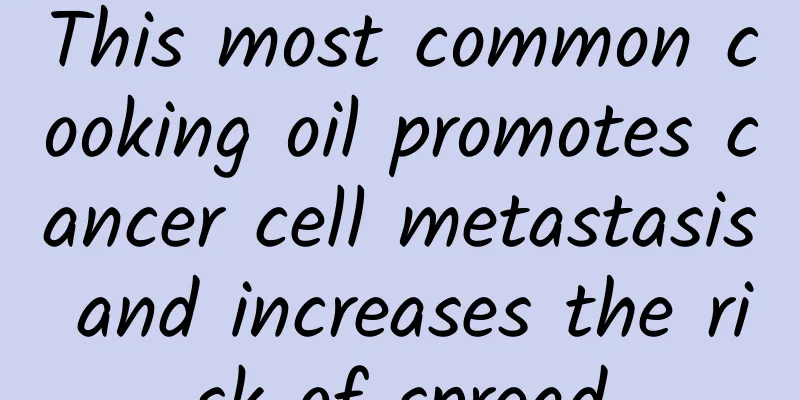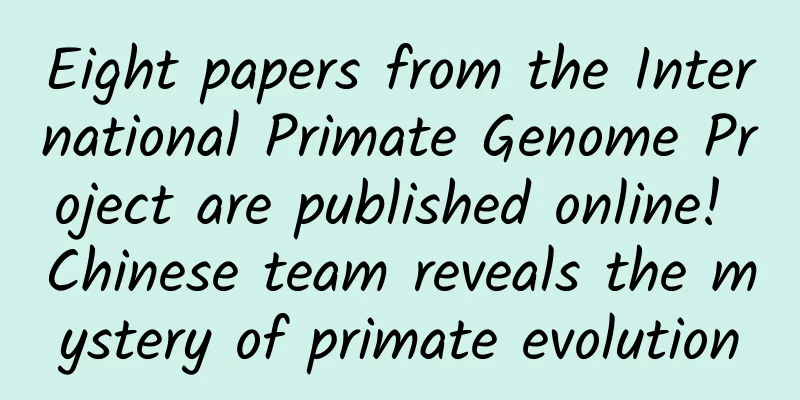Let me show you some colors! The source of color in the food world

|
Food pigments are food additives that can be consumed in moderation and can change the original color of food to a certain extent. They can be divided into natural pigments and artificial synthetic pigments according to their sources. Most natural pigments are microbial pigments and plant pigments extracted from animal and plant tissues, and are widely present in our daily diet. First of all, let's get to know lycopene. It is actually a carotenoid that can present a bright red color and has a strong antioxidant effect. Lycopene has a wide range of food sources. It is distributed in the fruits of tomatoes, pumpkins, watermelons, persimmons, peaches, mangoes, papayas, etc., as well as the roots of radishes and carrots. Tomatoes and various tomato products contribute 85% of the lycopene consumed in daily life. Lycopene is insoluble in water, but soluble in oil. Therefore, cooking, crushing tomatoes and adding oil in daily life can improve the absorption and utilization of lycopene. For example, the bioavailability of lycopene in tomato sauce is four times higher than that of fresh tomatoes. From the chemical structure, lycopene belongs to polyunsaturated fatty hydrocarbons, which are very sensitive to oxidation reactions and can effectively remove oxidative groups and peroxidation reactions. Lycopene is the most powerful scavenger of singlet oxygen, which is the main cause of skin aging after ultraviolet light exposure. The effects of lycopene in preventing cancer, enhancing immunity, preventing cardiovascular and cerebrovascular diseases, and delaying aging may all be related to its antioxidant properties. The second type is also a carotenoid, capsanthin, which usually appears light yellow to orange-red and is mostly found in mature red hot peppers of the Solanaceae family. Capsanthin is insoluble in water, soluble in organic solvents, stable to heat but sensitive to light, and easily fades when exposed to strong outdoor light. When capsanthin is used in foods such as jelly, beverages, and soy sauce, the coloring is uniform, the brightness is good, and the color is bright and vivid. Capsanthin can be deposited in the skin and egg yolks of poultry. Feeding chickens with feed containing capsanthin can color the chicken skin and egg yolks, which are bright in color and richer in nutrition. As a common property of carotenoids, capsanthin has antioxidant properties. It can not only effectively prevent atherosclerosis, but also resist radiation and prevent cancer to a certain extent. The third type, astaxanthin, is essentially a beta-carotene, known as a "super antioxidant". Its crystals are a fine dark purple-brown powder with a pink hue. Astaxanthin is fat-soluble and insoluble in water. High temperature, outdoor light, and Fe2, Fe3, and Cu2 destroy its stability. The red color of shrimp and crab after steaming is the result of high-temperature oxidation of astaxanthin. It is more stable in a weakly alkaline environment. Natural astaxanthin is mostly in a bound state (i.e., astaxanthin monoester and astaxanthin diester), and often forms complexes with proteins to produce different colors such as yellow, blue, and green. Natural astaxanthin mainly comes from Haematococcus pluvialis, waste from aquatic products, and Phaffia rhodozyma. Astaxanthin is a powerful scavenger of free radicals, reactive oxygen and reactive nitrogen. In terms of the ability to quench singlet oxygen, astaxanthin is 11 times that of β-carotene and 550 times that of α-tocopherol. Its antioxidant capacity is 7 times that of lycopene, 60 times that of grape seeds and 200 times that of tea polyphenols. Astaxanthin can also inhibit lipid peroxidation by enhancing the activity of antioxidant enzymes and protect active macromolecules such as DNA, proteins and lipids. Studies have shown that astaxanthin also has the effects of enhancing immunity, anti-inflammatory, anti-tumor, preventing cardiovascular diseases and preventing ophthalmic diseases. Astaxanthin is used in cosmetics to improve the coloring power and color retention of products, but more importantly, it uses its powerful antioxidant properties to protect and improve the skin. The next character to be introduced is a well-known character - anthocyanin, which is a class of water-soluble natural pigments with about 20 kinds. The most common ones in food are geranium pigment, cornflower pigment, delphinium pigment, peony pigment, morning glory pigment and mallow pigment. Anthocyanin is widely present in angiosperms, such as purple sweet potato, grape, blood orange, blueberry, eggplant, cherry, strawberry, mulberry, black wolfberry, elderberry, morning glory, etc. The anthocyanin content in elderberry is 200-1000mg/100g fresh weight, the anthocyanin content in bilberry is 148-725mg/100g, and the anthocyanin content in purple sweet potato is about 872.9mg/100g. Free anthocyanin is extremely rare, usually forming anthocyanin in the form of glycoside, which is also the form of anthocyanin in nature. Anthocyanin belongs to bioflavonoid substances, which are relatively stable in nature and are partially absorbed in the gastrointestinal tract. The most important physiologically active function of anthocyanins is to scavenge free radicals and anti-oxidation. Studies have shown that the antioxidant capacity of anthocyanins is 50 times higher than that of vitamin E and 20 times higher than that of vitamin C. Studies have also shown that it has magical effects such as improving eyesight, anti-wrinkle and skin beautification, improving blood circulation, preventing cancer and resisting mutation. The following pigment is often mistaken for anthocyanin - betalain, which is also a water-soluble food pigment that can make plants/food appear purple-red. It is mainly found in red beets of Chenopodiaceae, leaves of Amaranthaceae, petals of Portulacaceae, cactus fruits and pitaya peel and pulp of Cactaceae, and pokeweed berries and cockscombs of Phytolaccaaceae. Betalain is insoluble in organic solvents and is more susceptible to reducing agents and oxidizing agents. Temperature and pH also affect its stability. It is relatively stable in a weakly acidic environment and turns yellow in a high temperature and alkaline environment. Betalain can be found in urine 2-4 hours after intestinal absorption, so people do not need to panic if they have "hematuria" after using red pitaya. It may just be "beet urine". People who take betalain can improve the body's antioxidant capacity, such as scavenging lipid free radicals, protecting the stability of vascular endothelial cells, and anti-cancer effects. Studies have found that the antioxidant capacity of betalain is weaker than vitamin E, but stronger than β-carotene. Interestingly, it is generally believed that betacyanin and anthocyanin are mutually exclusive in plants, that is, if a plant produces betacyanin, it will not produce anthocyanin. Finally, let's take a look at curcumin, a yellow pigment extracted from the rhizomes of ginger plants such as turmeric, zedoary, and tulip. Turmeric is the spice that makes many curries bright yellow. Curcumin is insoluble in water, but soluble in ethanol and propylene glycol. Curcumin is yellow in neutral and acidic environments and reddish brown in alkaline environments. This is the secret of wizards or "great immortals" pretending to be gods - burning straw paper talismans are melted into clear water to generate magic water (actually alkaline wood ash water), and peach wood swords or other magic tools are stained with magic water to pierce straw paper soaked in turmeric water. The punctured straw paper turns reddish brown like blood, and it seems that the evil spirit has been successfully subdued. Curcumin has antioxidant, anti-inflammatory, choleretic, lipid-lowering, immune-regulating, and anti-tumor effects. It can increase the activity of superoxide dismutase (SOD), catalase (CAT) and glutathione peroxidase (GSH-PX) in the body, which are also important "sites" for beauty or anti-aging. These natural food pigments are widely used in beauty and skin care products and various health care products due to their antioxidant properties. After knowing their sources and functions, you can make rational choices. |
<<: Why is the “Maluo emoticon package”, which is deified by young people, a monkey?
Recommend
Short video, live broadcast, and private domain operation rules!
The growth of private domains requires a large am...
The only new energy battery! S&P raises CATL's rating, all A certification!
On May 7, Standard & Poor's upgraded CATL...
Zhang Baosi's exclusive promotional video copywriting course, promotional video creation
Zhang Baosi's exclusive promotional video cop...
The red envelope subsidy method is no longer effective. Try using prospect theory to promote and attract traffic!
In the past few years of the Internet 's rapi...
Blizzard, temperature drop! Four warnings issued simultaneously! Be careful when traveling in these areas →
Affected by the cold wave March 2 Large-scale rai...
It’s hard to imagine that the principles of perming hair and steaming buns are the same?
The Spring Festival is coming soon. For many peop...
Cheese rhythm Cao Maogui gold interception tactics band bottom-picking accurate division of individual stocks important turning points video 8 episodes
Cao Maogui's golden interception tactics to pi...
Foshan Beauty Salon Mini Program, What are the functions of the Hairdressing Mini Program?
Nowadays, the demand for the beauty industry is g...
What does it mean to attract traffic to Kuaishou’s live broadcast room? How to attract traffic to Kuaishou live broadcast room?
The rapid development of mobile Internet has enab...
It's not just about "burning money". The video website industry needs to have brains to seek breakthroughs.
Investment and mergers and acquisitions within th...
Without the magic in The Three-Body Problem, how can we "broadcast" to the universe? This magical ring is the key!
This year, the science fiction novel "The Th...
Will there ever be a day when all QR codes are used up?
Author: Wang Rifang Reviewer: Chen Xudong With th...
November marketing hotspot calendar!
The National Day holiday has just passed, and the...
How does Pinduoduo, which has a super high conversion rate, make users unable to stop buying?
In the field of e-commerce, Pinduoduo may be the ...
After 40 years of fighting acid rain, Tsinghua University may finally win
China has achieved remarkable results in acid rai...









